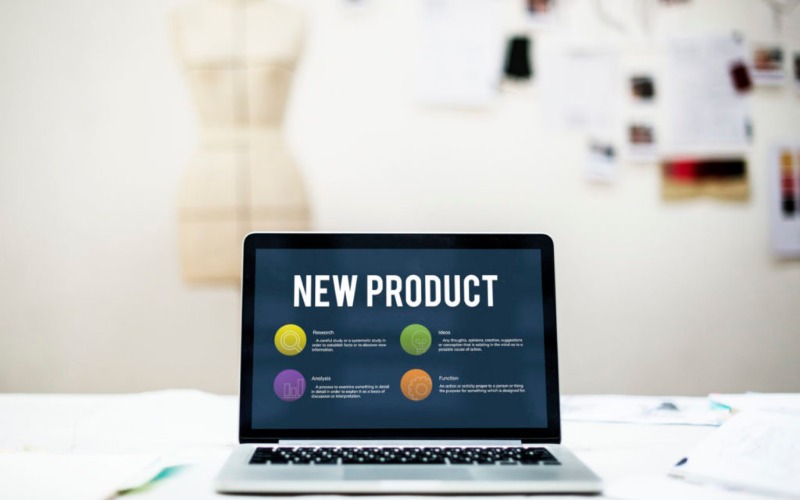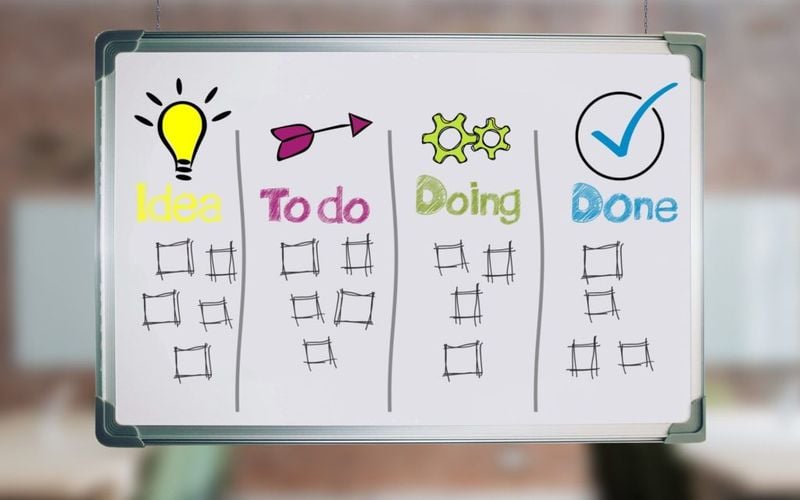The Definitive Guide to Product Management
New products hit the market every day. You see them on store shelves or at your favorite online shop or ready for download on your go-to software hub. But, how do those products get from being a mere idea to becoming an actual product? The answer is product management.

In the past couple of decades, the fast-paced software industry has strengthened and redefined the process of product management.
This guide to product management will give you a thorough understanding of what this process is, how it works in the software industry, and how a person can enter the industry.
What is Product Management?
One common explanation of what product management is that it’s the intersection between business, technology, and customer. It is where a business can make a profitable product that its technical experts can build and that its customers will buy. This explanation gives a general definition of the varied role that product management plays in multiple industries.
This definition also works in the software industry. Product management encompasses all the activities required to bring a software product to market and to maintain it through its lifecycle. This includes product ideation, design, delivery, support, maintenance, and retirement. It also includes gathering customer feedback, prioritizing improvements, and managing marketing and sales.
The Product Management Lifecycle
Every product has a lifecycle which begins at its conception and ends at its retirement. Some products remain on the market for a year or two while other products remain viable for decades or even a whole lifetime.
Experts often define a product’s lifecycle by splitting it up into four stages:
- Conceive – An initial concept is born and specified.
- Design – The concept becomes a detailed design that is validated and analyzed.
- Realize – The detailed design moves to build, test, quality assurance, and production.
- Service – This final stage is where the released product is maintained, supported, and eventually retired.
The reality of a product’s lifecycle is a bit more complicated than four sequential steps. The concept stage may involve coming up with multiple concepts and deciding which are viable. The design stage may have multiple iterations and changes. Going into production can uncover previously unknown constraints that require changes to the design. Once a product is in production, there may be iterative improvements made and upgrades required, which throws the product back to the design and realize stages.
That is why experts in product management have adopted newer and more responsive methodologies.
Further reading:
Agile Development for Software Product Management
The term “agile development” came into being with the publication of the Manifesto for Agile Software Development in 2001. However, the principles behind this type of development began developing in the 1950s, harbingering the development of several flexible development methodologies in the 1990s like Scrum, Rapid Application Development (RAD), and the Unified Process (UP).
Agile Software Development has six phases:
- Concept – Conception of projects and products begins here. They are envisioned and prioritized according to business and customer needs.
- Inception – Once a product has been prioritized, it needs to move into reality. This is where management identifies the team members, puts funding into place and discuses initial requirements.
- Iteration and Construction – Development happens in multiple iterations. Each iteration covers adding certain requirements to the software with the goal of producing working software at the end of each iteration. Developing new software usually requires multiple iterations before the first product release.
- Release – This is where the last iteration moves into production. Before it’s released, each iteration needs to go through quality testing and debugging. This is when training occurs and documentation gets updated. Once everything is in place, the last iteration goes into production.
- Production – Software needs ongoing support for user problems and program errors.
- Retirement – When a software product reaches its end of life, product support notified users and defines the migration path for archiving or replacing the software.
After a software product goes into initial production, it enters the iterative improvement cycle.
This is a five-stage approach to making changes to the software and releasing the changes to production.
- Defining Requirements – Most iterations are between two and four weeks in length. Because of the time constraint, each iteration can only cover a limited number of requirements. In this stage, the iteration’s requirements are defined using the product backlog, customer feedback, and stakeholder needs.
- Development – The team designs and develops the software changes based on the defined requirements.
- Testing – Once development is done, the next step is testing the changes. Training and documentation changes are also made in this phase.
- Delivery – With testing, documentation, and training complete, the new iteration is moved into production.
- Feedback – Once an iteration goes into production, the team collects feedback from customers and stakeholders. This feedback becomes requirements that go into a future iterative release.
The software usually remains in this iterative cycle until the product is retired. Early iterations will work to get improvements and upgrades out as well as bug fixes for prior iterations. Later iterations will focus more on bug fix releases rather than improvements or upgrades.
Further reading:
- What Is Agile Methodology? Modern Software Development Explained
- What is Scrum?
- Rapid Application Development (RAD): What Is It And How Do You Use It?
- Tips For Agile Product Roadmaps & Product Roadmap Examples
Creating Your First Product
Creating your first software product is both exciting and daunting. However, with the methodologies defined above and the skills of a product manager, you can get that first product done and released to your customers.

Concept
The first step is coming up with a concept for the software. Successful products are the ones that fill a need or fix a pain point for customers. These needs and pain points can often be identified through customer interviews, surveys, and other forms of feedback.
Market research is also important at this stage. Does the market already have solutions in place for the customer’s need or pain point? Is there a way to improve what the competition has out there? If there is no existing solution, what features do users want in such a product?
Inception
Once you formulate an initial concept, you need to assemble a team and get a starting budget to create the software. This first team is usually minimal because you need to validate that the product is actually going to fulfill the customer’s need before a company devotes a lot of time, money and resources into the project.
Iteration and Construction
When first developing a software product, you need to get an initial pre-production version out to select customers as soon as possible. This iteration should include some of the core features of the product in a usable format. Ask customers to provide honest feedback on all aspects of the product. That feedback will tell you if the software is viable, where it needs improvement, or if you are already on the right track.
This concept of an early release works under the principle of minimum viable product (MVP). It is the most pared down release of the product that still allows developers to get valuable feedback from users. This approach allows developers to work directly with actual customers early in the process, which helps streamline the development and release process.
Working so closely with customers is desirable when a company is focusing on user-centered design. Ultimately, the software’s users are the ones who are going to be working with it. They have to like it to adopt it and to recommend it to their colleagues and friends.
A user-centered design focuses on two aspects: the user experience and the user interface. The user experience focuses on making the product effective and enjoyable to use. The user interface focuses on the way the product looks and feels as well as how the customer interacts with it.
Another way users are brought into the design process is through the use of wireframes or mock-ups.
A wireframe can be used in building the user experience. It allows you to walk through how the software will work. What will happen if you press this button? What information will appear if you do this action?
Creating a mock-up is the next step after making a wireframe. It is where you start adding colors, text, images, and other elements to the software. It is an important part of developing the user interface. While you may think one design is best, your users may tell you otherwise once they see the mockup.
Once the software is deemed viable, iterative design and construction begin. Each new iteration adds additional functionality until reaching the production release.
Further reading:
- What is a MVP?
- How I Learned to Create a Wireframe: 6 Easy Steps to Follow
- 4 Professional Design Mock-Up Techniques To Show Off Your Work
Release
After the final iteration is ready, it needs to go through quality assurance testing to make sure it meets the iteration requirements and throws no errors. Any problems found are reported back to the development team and the iteration is not released until the errors are fixed.
With the release of a new software product, training is critical for internal staff as well as external customers. Training materials need to be provided and classes organized as needed.
Documentation is another critical component of the release process. The software needs adequate documentation for internal use and external release. Future iterations require updates to be made as necessary.
Production
Once the release is in production, it requires ongoing support. This means having a support system in place before the production release occurs.
Customers need a clearly defined process to give feedback and to report errors. Personnel need to be able to handle support questions and to fix setup problems.
Product Management vs Project Management
While both product management and project management share initials, they are distinctly different positions that serve distinct roles.
A product manager is responsible for the lifecycle of one or more products. These products can take months or even years to bring to market. And, once they reach the market, they need ongoing support and improvement. At the end of the product’s life, it must be retired. A product manager manages all aspects from beginning to end.
A project manager is responsible for managing a defined project to create a specific product, service, or result. That person organizes and prioritizes resources to varying tasks to complete the project. The project ends once the expected outcome happens. Support and maintenance of the product, service, or result are handled by others after the project is done.
In most medium to large organizations, the role of a product manager is separate from a project manager. In some smaller organizations, however, one person may do both roles.
The Roles and Responsibilities of a Product Manager
The roles and responsibilities of a product manager can vary widely from company to company and from industry to industry. It can even vary from one division to another within the same company.

Here is a list of common tasks that a product manager may be responsible for:
- Gathering new product ideas
- Evaluating and analyzing new product ideas
- Analyzing the market to spot customer needs and trends
- Collecting and analyzing data on competing products and their creators
- Preparing for gathering customer opinions through interviews
- Defining what customers need based on interview data as well as market potential
- Working with technical teams to develop comprehensive requirements based on customer needs
- Balancing costs and efforts to maximize value to the customer as well as potential profits
- Positioning the product for maximum market penetration
- Planning related product lines and strategy
- Developing forecasts of customer demand at present as well as the future
- Developing the business case for bringing the product to market
- Providing input to the company’s product portfolio
- Communicating plans and strategy to management and to team members
- Working with project managers on completing specific projects in the product lifecycle
- Gathering customer feedback
- Developing and executing plans for marketing and promotions
- Evaluating pricing
- Supporting customers
- Coordinating the product launch
- Communicating progress with management and stakeholders
- Managing the entire product lifecycle
Not every product manager will have to take on each of these responsibilities. Many companies spread some of these across teams. However, a good product manager will have the ability to fulfill or give experienced input into most of these responsibilities.
Types of Product Managers
Every industry and, indeed, every company, has its own way of approaching product management.
Some companies put one person in charge of a product. That person is in charge of the management of every aspect of the product lifecycle. That person creates a product vision and works with a multi-discipline team to bring it to fruition. This person has input to support, maintenance, upgrades, and retirement of products as well. Since this person carries so much authority, he or she is a heavyweight when it comes to being a product manager.
Other companies use a team approach to product management. While one person may be the product manager, that person does not have decision making powers over the teams that manage the product lifecycle. That person is more of a vision maker and an overall coordinator. This is more of a lightweight product manager, compared to the person solely in charge.
Product Owner vs Product Manager vs Project Sponsor
The concept of a product owner comes from the Scrum method of software development. In this methodology, one person is assigned the role of product owner. That person’s job is to create user stories for the development teams to act on, prioritize work from the product backlog, and authenticate that the completed work fulfills the user story criteria.
Some organizations have taken the role of product owner out of the Scrum context and made it an official role within their organization. However, how this role actually works varies differently from one company to another.
In some companies, the official product owner retains the same responsibilities as defined by the Scrum methodology. However, other companies have used the term product owner to mean something else. Some product owners are really product managers with a different title. Some project owners are managers or executives who act as the project sponsor.
What is a project sponsor? Products need funding in order to make it to the marketplace successfully. A sponsor is usually a manager or executive who provides funding for the product’s development, takes responsibility for the project’s success or failure, and champions the project in the higher levels of the company.
Further reading:
- What is a Product Owner?
- Project Sponsorship – Senior Management’s Role In The Successful Outcome Of Projects
Becoming a Product Manager
People interested in product management often wonder what they need to do to get the job. Because a product management is a field that requires knowledge in multiple fields and the ability to work with people, it is a job best suited for someone with the following skillset:
- Ability to build strong relationships with customers and team members
- People skills that allow for easy customer interviews and user testing
- Capacity to remain objective to avoid projecting personal preferences onto users
- Aptitude to understand the emotions and concerns of customers, salespeople, and support personnel
- Technical know-how to be able to speak intelligently with end users and engineers
- Ability to prioritize features and plan product iteration
- Being able to allocate resources appropriately
- Capability to perform market assessments
- Aptitude for translating business requirements to technical ones, and vice versa
- Mastery of pricing and revenue modeling
The basis of many of these skills can be taught in a classroom. However, the most successful product managers have years of experience in mastering each skill before they become a product manager.
Just one note. There is some debate as to whether a product manager needs to have technical skills or just needs to understand the business side and let the engineers do their thing. While a non-technical person can definitely become a product manager, many companies prefer putting someone with at least some technical know-how into that position.
Education Requirements
Most companies do not require a specific degree or certification when hiring someone as a product manager. However, they do want to see someone with a degree in a related field or someone who has learned the skills on the job.

There are generally three education paths to becoming a product manager:
- Getting a specific product management degree
- Getting a related degree
- Building skills on the job
A growing number of universities offer degrees or certificates in the product management field. Some of these degree programs focus solely on the software industry while others take a broader approach that is applicable to multiple fields. Most degree programs or certificates are offered on the graduate level.
Many product managers have degrees in a related field. Some have a general business degree, such as an MBA. Others have degrees in areas such as economics, marketing, public relations, management, or communications.
Some product managers come into the role by experience. This is usually the slowest way to obtain the job. However, many successful product managers are those who started out in a technical role and worked their way up into more business-focused jobs. This mixed experience works in their favor when it comes to understanding both the business and technical sides.
Product Management Certifications
Multiple private organizations offer product management certification. These organizations usually require you to take a comprehensive examination in multiple aspects of product management. You must get a certain score before they will grant the certificate.
Here are some popular certifications that can help you with your product management journey:
- AIPMM Certified Product Manager
- Professional Scrum Master
- PMI Agile Certified Practitioner (PMI ACP)® Certification
Your Role is Crucial
Product managers play a significant role in today’s software industry. They are the ones that take ideas and make them a reality. They guide a software product from inception through its entire lifecycle. They know the product, they know its users, they know how it needs to grow. They are the leader who makes things happen.





